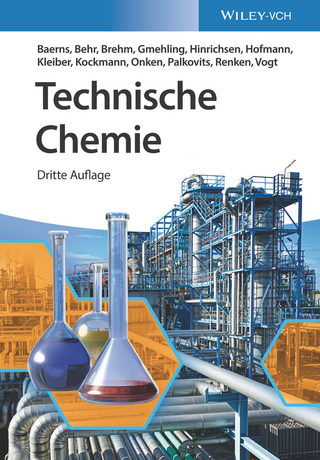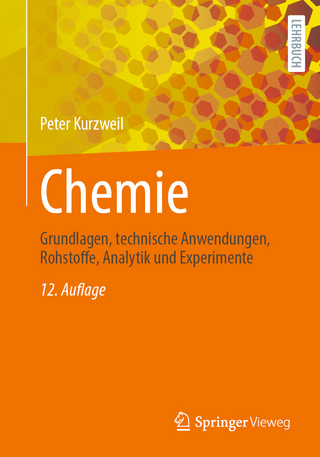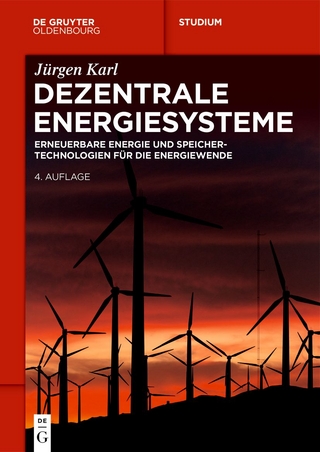
Fluid Mechanics for Chemical Engineers
Pearson (Verlag)
978-0-13-471282-6 (ISBN)
Since most chemical processing applications are conducted either partially or totally in the fluid phase, chemical engineers need mastery of fluid mechanics. Such knowledge is especially valuable in the biochemical, chemical, energy, fermentation, materials, mining, petroleum, pharmaceuticals, polymer, and waste-processing industries.
Fluid Mechanics for Chemical Engineers: with Microfluidics, CFD, and COMSOL Multiphysics 5, Third Edition, systematically introduces fluid mechanics from the perspective of the chemical engineer who must understand actual physical behavior and solve real-world problems. Building on the book that earned Choice Magazine's Outstanding Academic Title award, this edition also gives a comprehensive introduction to the popular COMSOL Multiphysics 5 software.
This third edition contains extensive coverage of both microfluidics and computational fluid dynamics, systematically demonstrating CFD through detailed examples using COMSOL Multiphysics 5 and ANSYS Fluent. The chapter on turbulence now presents valuable CFD techniques to investigate practical situations such as turbulent mixing and recirculating flows.
Part I offers a clear, succinct, easy-to-follow introduction to macroscopic fluid mechanics, including physical properties; hydrostatics; basic rate laws; and fundamental principles of flow through equipment. Part II turns to microscopic fluid mechanics:
Differential equations of fluid mechanics
Viscous-flow problems, some including polymer processing
Laplace's equation; irrotational and porous-media flows
Nearly unidirectional flows, from boundary layers to lubrication, calendering, and thin-film applications
Turbulent flows, showing how the k-ε method extends conventional mixing-length theory
Bubble motion, two-phase flow, and fluidization
Non-Newtonian fluids, including inelastic and viscoelastic fluids
Microfluidics and electrokinetic flow effects, including electroosmosis, electrophoresis, streaming potentials, and electroosmotic switching
Computational fluid mechanics with ANSYS Fluent and COMSOL Multiphysics
Nearly 100 completely worked practical examples include 12 new COMSOL 5 examples: boundary layer flow, non-Newtonian flow, jet flow, die flow, lubrication, momentum diffusion, turbulent flow, and others. More than 300 end-of-chapter problems of varying complexity are presented, including several from University of Cambridge exams. The author covers all material needed for the fluid mechanics portion of the professional engineer's exam.
The author's website (fmche.engin.umich.edu) provides additional notes, problem-solving tips, and errata.
Register your book for convenient access to downloads, updates, and/or corrections as they become available. See inside book for details.
James O. Wilkes is Professor Emeritus of Chemical Engineering at the University of Michigan, where he served as department chairman and assistant dean for admissions. From 1989 to 1992, he was an Arthur F. Thurnau Professor. Wilkes coauthored Applied Numerical Methods (Wiley, 1969) and Digital Computing and Numerical Methods (Wiley, 1973). He received his bachelors degree from the University of Cambridge and his M.S. and Ph.D. in chemical engineering from the University of Michigan. His research interests involve numerical methods for solving a wide variety of engineering problems.
Preface xv
Part I: Macroscopic Fluid Mechanics 1
Chapter 1: Introduction to Fluid Mechanics 3
1.1 Fluid Mechanics in Chemical Engineering 3
1.2 General Concepts of a Fluid 3
1.3 Stresses, Pressure, Velocity, and the Basic Laws 5
1.4 Physical Properties—Density, Viscosity, and Surface Tension 10
1.5 Units and Systems of Units 21
1.6 Hydrostatics 26
1.7 Pressure Change Caused by Rotation 39
Problems for Chapter 1 42
Chapter 2: Mass, Energy, and Momentum Balances 55
2.1 General Conservation Laws 55
2.2 Mass Balances 57
2.3 Energy Balances 61
2.4 Bernoulli’s Equation 67
2.5 Applications of Bernoulli’s Equation 70
2.6 Momentum Balances 78
2.7 Pressure, Velocity, and Flow Rate Measurement 92
Problems for Chapter 2 96
Chapter 3: Fluid Friction in Pipes 120
3.1 Introduction 120
3.2 Laminar Flow 123
3.3 Models for Shear Stress 129
3.4 Piping and Pumping Problems 133
3.5 Flow in Noncircular Ducts 150
3.6 Compressible Gas Flow in Pipelines 156
3.7 Compressible Flow in Nozzles 159
3.8 Complex Piping Systems 163
Problems for Chapter 3 168
Chapter 4: Flow in Chemical Engineering Equipment 185
4.1 Introduction 185
4.2 Pumps and Compressors 188
4.3 Drag Force on Solid Particles in Fluids 194
4.4 Flow Through Packed Beds 204
4.5 Filtration 210
4.6 Fluidization 215
4.7 Dynamics of a Bubble-Cap Distillation Column 216
4.8 Cyclone Separators 219
4.9 Sedimentation 222
4.10 Dimensional Analysis 224
Problems for Chapter 4 230
Part II: Microscopic Fluid Mechanics 247
Chapter 5: Differential Equations of Fluid Mechanics 249
5.1 Introduction to Vector Analysis 249
5.2 Vector Operations 250
5.3 Other Coordinate Systems 263
5.4 The Convective Derivative 266
5.5 Differential Mass Balance 267
5.6 Differential Momentum Balances 271
5.7 Newtonian Stress Components in Cartesian Coordinates 274
Problems for Chapter 5 285
Chapter 6: Solution Of Viscous-Flow Problems 292
6.1 Introduction 292
6.2 Solution of the Equations of Motion in Rectangular Coordinates 294
6.3 Alternative Solution Using a Shell Balance 301
6.4 Poiseuille and Couette Flows in Polymer Processing 313
6.5 Solution of the Equations of Motion in Cylindrical Coordinates 325
6.6 Solution of the Equations of Motion in Spherical Coordinates 330
Problems for Chapter 6 336
Chapter 7: Laplace’s Equation, Irrotational and Porous-Media Flows 357
7.1 Introduction 357
7.2 Rotational and Irrotational Flows 359
7.3 Steady Two-Dimensional Irrotational Flow 364
7.4 Physical Interpretation of the Stream Function 367
7.5 Examples of Planar Irrotational Flow 369
7.6 Axially Symmetric Irrotational Flow 382
7.7 Uniform Streams and Point Sources 384
7.8 Doublets and Flow Past a Sphere 388
7.9 Single-Phase Flow in a Porous Medium 391
7.10 Two-Phase Flow in Porous Media 394
7.11 Wave Motion in Deep Water 400
Problems for Chapter 7 404
Chapter 8: Boundary-Layer and Other Nearly Unidirectional Flows 418
8.1 Introduction 418
8.2 Simplified Treatment of Laminar Flow Past a Flat Plate 419
8.3 Simplification of the Equations of Motion 426
8.4 Blasius Solution for Boundary-Layer Flow 429
8.5 Turbulent Boundary Layers 432
8.6 Dimensional Analysis of the Boundary-Layer Problem 434
8.7 Boundary-Layer Separation 437
8.8 The Lubrication Approximation 448
8.9 Polymer Processing by Calendering 457
8.10 Thin Films and Surface Tension 463
Problems for Chapter 8 466
Chapter 9: Turbulent Flow 480
9.1 Introduction 480
9.2 Physical Interpretation of the Reynolds Stresses 487
9.3 Mixing-Length Theory 488
9.4 Determination of Eddy Kinematic Viscosity and Mixing Length 491
9.5 Velocity Profiles Based on Mixing-Length Theory 493
9.6 The Universal Velocity Profile for Smooth Pipes 495
9.7 Friction Factor in Terms of Reynolds Number for Smooth Pipes 497
9.8 Thickness of the Laminar Sublayer 499
9.9 Velocity Profiles and Friction Factor for Rough Pipe 501
9.10 Blasius-Type Law and the Power-Law Velocity Profile 502
9.11 A Correlation for the Reynolds Stresses 503
9.12 Computation of Turbulence by the k–ε Method 506
9.13 Analogies Between Momentum and Heat Transfer 520
9.14 Turbulent Jets 524
Problems for Chapter 9 532
Chapter 10: Bubble Motion, Two-Phase Flow, and Fluidization 542
10.1 Introduction 542
10.2 Rise of Bubbles in Unconfined Liquids 542
10.3 Pressure Drop and Void Fraction in Horizontal Pipes 547
10.4 Two-Phase Flow in Vertical Pipes 554
10.5 Flooding 566
10.6 Introduction to Fluidization 570
10.7 Bubble Mechanics 572
10.8 Bubbles in Aggregatively Fluidized Beds 577
Problems for Chapter 10 586
Chapter 11: Non-Newtonian Fluids 602
11.1 Introduction 602
11.2 Classification of Non-Newtonian Fluids 603
11.3 Constitutive Equations for Inelastic Viscous Fluids 606
11.4 Constitutive Equations for Viscoelastic Fluids 626
11.5 Response to Oscillatory Shear 633
11.6 Characterization of the Rheological Properties of Fluids 636
Problems for Chapter 11 644
Chapter 12: Microfluidics and Electrokinetic Flow Effects 653
12.1 Introduction 653
12.2 Physics of Microscale Fluid Mechanics 654
12.3 Pressure-Driven Flow Through Microscale Tubes 655
12.4 Mixing, Transport, and Dispersion 656
12.5 Species, Energy, and Charge Transport 658
12.6 The Electrical Double Layer and Electrokinetic Phenomena 661
12.7 Measuring the Zeta Potential 676
12.8 Electroviscosity 678
12.9 Particle and Macromolecule Motion in Microfluidic Channels 678
Problems for Chapter 12 683
Chapter 13: An Introduction to Computational Fluid Dynamics and ANSYS Fluent 688
13.1 Introduction and Motivation 688
13.2 Numerical Methods 690
13.3 Learning CFD by Using ANSYS Fluent 699
13.4 Practical CFD Examples 703
References for Chapter 13 719
Chapter 14: COMSOL Multiphysics for Solving Fluid Mechanics Problems 720
14.1 COMSOL Multiphysics—An Overview 720
14.2 The Steps for Solving Problems in COMSOL 723
14.3 How to Run COMSOL 725
14.4 Variables, Constants, Expressions, and Units 741
14.5 Boundary Conditions 742
14.6 Variables Used by COMSOL 743
14.7 Wall Functions in Turbulent-Flow Problems 744
14.8 Streamline Plotting in COMSOL 747
14.9 Special COMSOL Features Used in the Examples 749
14.10 Drawing Tools 754
14.11 Fluid Mechanics Problems Solvable by COMSOL 756
14.12 Conclusion—Problems and Learning Tools 761
Appendix A: Useful Mathematical Relationships 762
Appendix B: Answers to the True/False Assertions 768
Appendix C: Some Vector and Tensor Operations 771
General Index 773
Comsol Multiphysics Index 782
The Authors 784
| Erscheinungsdatum | 23.09.2017 |
|---|---|
| Reihe/Serie | International Series in the Physical and Chemical Engineering Sciences |
| Sprache | englisch |
| Maße | 100 x 100 mm |
| Gewicht | 100 g |
| Themenwelt | Naturwissenschaften ► Chemie ► Technische Chemie |
| Naturwissenschaften ► Physik / Astronomie ► Mechanik | |
| Technik ► Maschinenbau | |
| ISBN-10 | 0-13-471282-X / 013471282X |
| ISBN-13 | 978-0-13-471282-6 / 9780134712826 |
| Zustand | Neuware |
| Haben Sie eine Frage zum Produkt? |
aus dem Bereich


